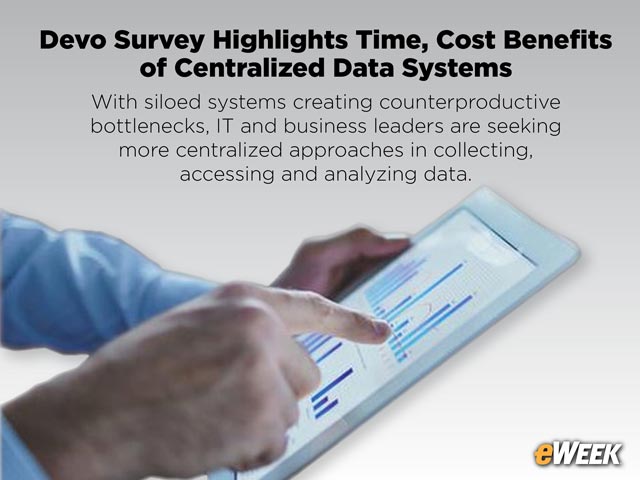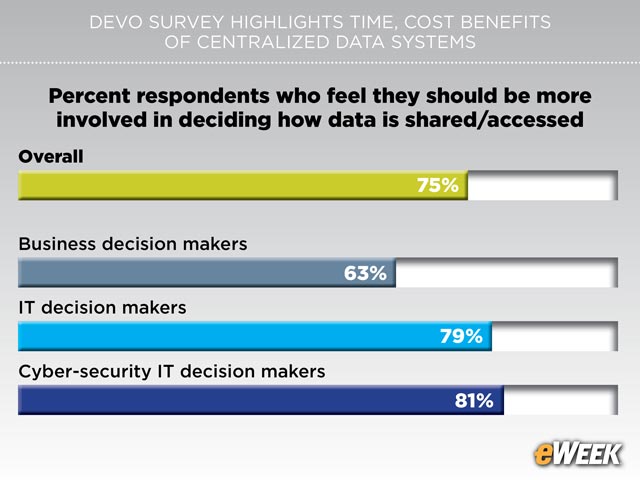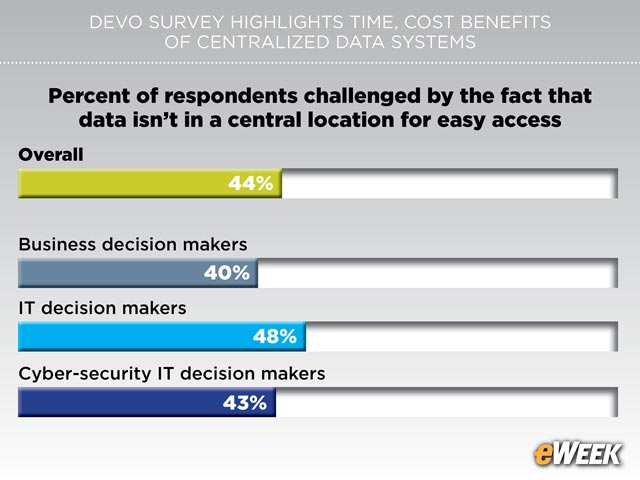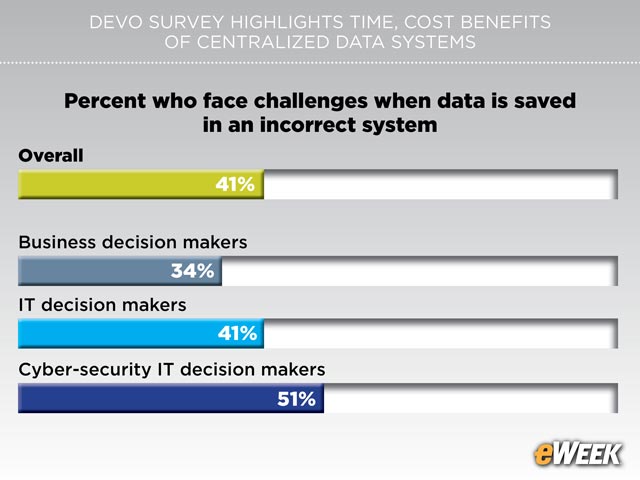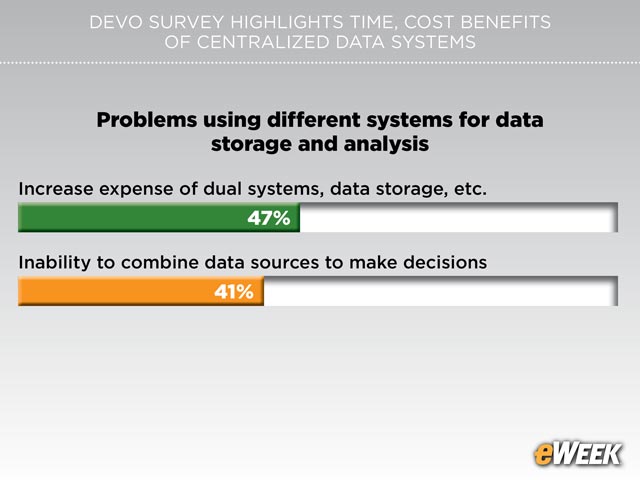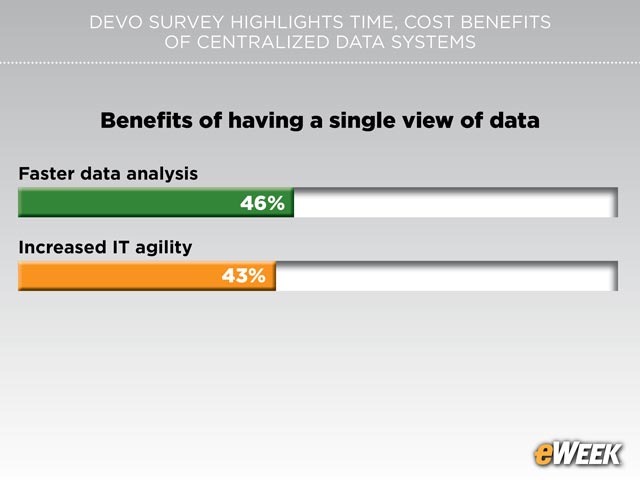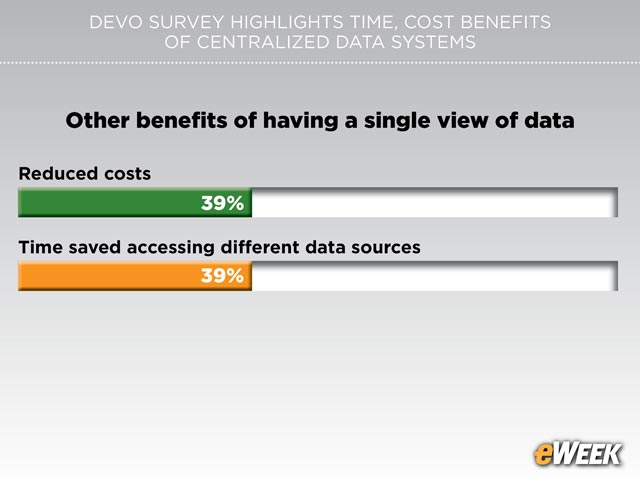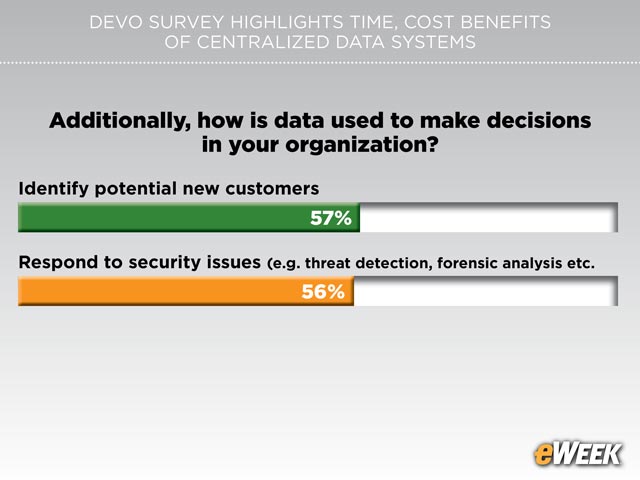eWEEK content and product recommendations are editorially independent. We may make money when you click on links to our partners. Learn More.
1Devo Survey Highlights Time, Cost Benefits of Centralized Data Systems
With the increasing presence of data throughout the enterprise, many IT and business leaders are recognizing the value of centralized systems to collect, store, access and analyze business data, according to a recent survey from Devo Technology. The resulting report, titled “What’s Data Got to Do with It?” indicates that “single view” of data would result in faster analysis and greater IT agility. A centralized approach would also reduce costs by eliminating redundant storage systems, while saving time in accessing multiple data sources. An estimated 400 IT, security and business decision-makers took part in the research, which was conducted by Vanson Bourne. The following slideshow presents survey highlights, with charts provided courtesy of Devo Technology, which specializes in real-time analytics of machine data.
2IT Wants More Control over Data Access
3Lack of Centralized Data Locations Presents Challenges
The findings reveal that 44 percent of respondents overall said they are challenged by the fact that their organization’s data isn’t in a central location for easy access. In terms of job-specific roles, 40 percent of business decision-makers, 48 percent of IT decision-makers and 43 percent of cyber-security decision-makers agree with this statement.
4Faulty Data “Saves” Create Inaccuracies
Just over two-of-five respondents overall said they face challenges when data is saved in an incorrect system. In breaking down the responses by job function, 34 percent of business decision-makers, 41 percent of IT decision-makers and 51 percent of cyber-security decision-makers deal with this issue.
5Siloed Systems Cause Expensive Frustrations
Nearly one-half of respondents said that the use of different systems for data storage and analysis increases expenses in the form of dual systems, data storage and other redundant system costs. Meanwhile 41 percent said this situation leads to an inability to combine data sources to make decisions.
6Single View Leads to Faster, More Agile Performance
7Enhanced Capabilities Bring “Time and Money” Bottom-Line Benefits
8Decisions Needed for Improved Operational Efficiencies
9Customer Identification, Security Operations Get Boost
Devo reports that 57 percent of respondents said they depend upon data to identify new customers. In addition, 56 percent said it helps them respond more effectively to security issues.
